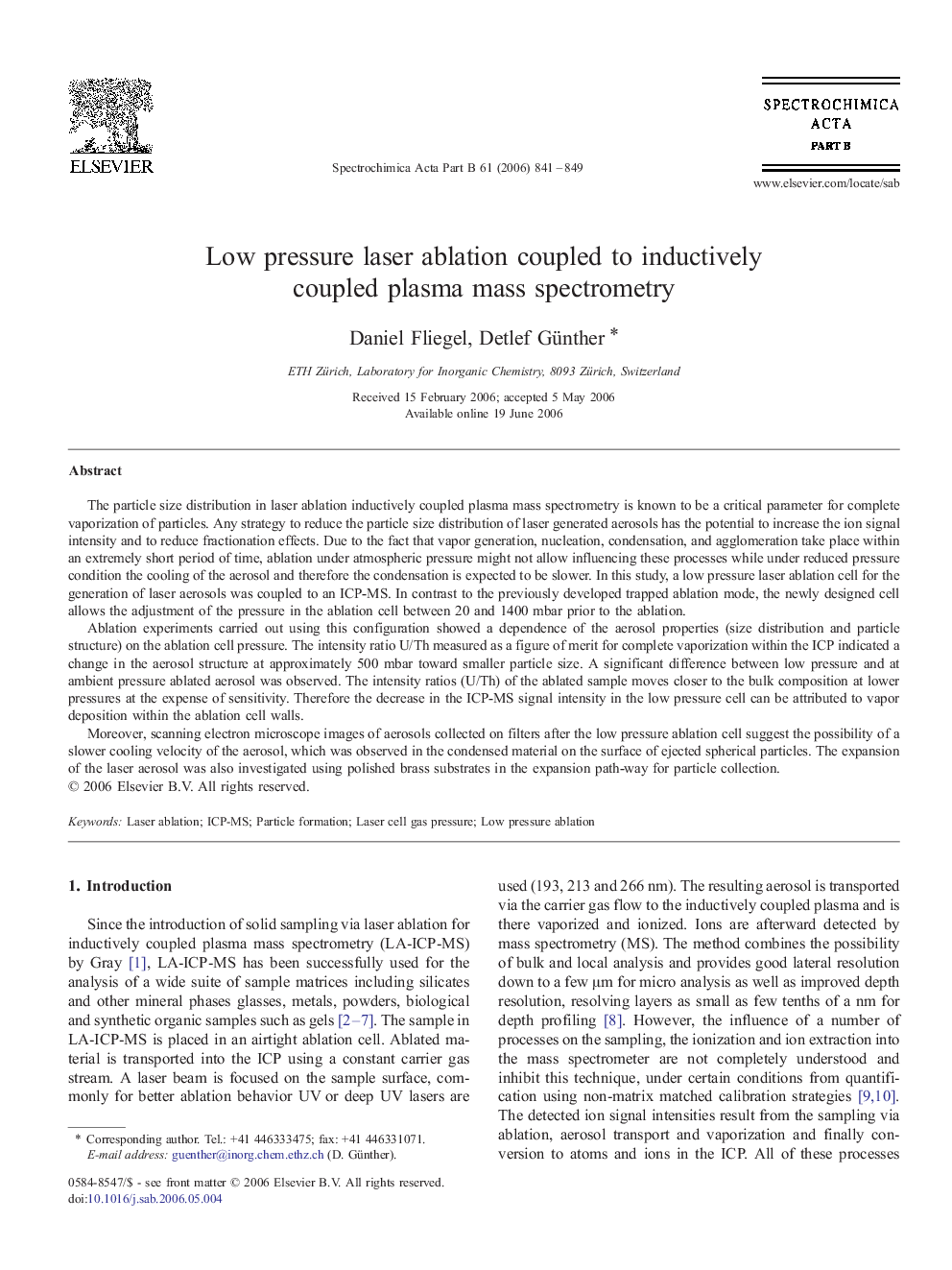| کد مقاله | کد نشریه | سال انتشار | مقاله انگلیسی | نسخه تمام متن |
|---|---|---|---|---|
| 1240987 | 969156 | 2006 | 9 صفحه PDF | دانلود رایگان |

The particle size distribution in laser ablation inductively coupled plasma mass spectrometry is known to be a critical parameter for complete vaporization of particles. Any strategy to reduce the particle size distribution of laser generated aerosols has the potential to increase the ion signal intensity and to reduce fractionation effects. Due to the fact that vapor generation, nucleation, condensation, and agglomeration take place within an extremely short period of time, ablation under atmospheric pressure might not allow influencing these processes while under reduced pressure condition the cooling of the aerosol and therefore the condensation is expected to be slower. In this study, a low pressure laser ablation cell for the generation of laser aerosols was coupled to an ICP-MS. In contrast to the previously developed trapped ablation mode, the newly designed cell allows the adjustment of the pressure in the ablation cell between 20 and 1400 mbar prior to the ablation.Ablation experiments carried out using this configuration showed a dependence of the aerosol properties (size distribution and particle structure) on the ablation cell pressure. The intensity ratio U/Th measured as a figure of merit for complete vaporization within the ICP indicated a change in the aerosol structure at approximately 500 mbar toward smaller particle size. A significant difference between low pressure and at ambient pressure ablated aerosol was observed. The intensity ratios (U/Th) of the ablated sample moves closer to the bulk composition at lower pressures at the expense of sensitivity. Therefore the decrease in the ICP-MS signal intensity in the low pressure cell can be attributed to vapor deposition within the ablation cell walls.Moreover, scanning electron microscope images of aerosols collected on filters after the low pressure ablation cell suggest the possibility of a slower cooling velocity of the aerosol, which was observed in the condensed material on the surface of ejected spherical particles. The expansion of the laser aerosol was also investigated using polished brass substrates in the expansion path-way for particle collection.
Journal: Spectrochimica Acta Part B: Atomic Spectroscopy - Volume 61, Issue 7, July 2006, Pages 841–849